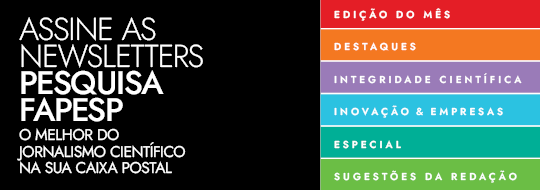 MORRO, 1959 / IMAGE FROM THE PORTINARI PROJECT COLLECTION
MORRO, 1959 / IMAGE FROM THE PORTINARI PROJECT COLLECTIONAnother highlight was the growth of the funds earmarked for regular grants and regular research aid, which increased by 8.32 percent and 14.57 percent respectively. In the case of grants, R$98.57 million were set aside for doctorates and R$79.65 million for post-doctoral studies, in addition to R$44.79 million for master’s degrees and R$16.79 million for undergraduate scientific initiation grants. Concerning the regular aid category, a figure that stood out was the growth of the number of thematic projects approved: 109, or almost 60 percent more than in 2008. Thematic project disbursements reached R$80.32 million, 28.32 percent more than in the previous year. Forty-two of all the new projects were thematic ones connected with the INCTs (National Institutes of Science and Technology), under a partnering agreement with the Ministry of Science and Technology. The funds earmarked for these amounted to R$17.37 million.
“All FAPESP activity is heavily imbued with a sense of purpose,” says the Foundation’s president, Celso Lafer. “There is an awareness of the increasingly important role of science and technology for sustained development and to ensure the population’s quality of life. To fulfill these purposes, FAPESP’s strong support is essential in the education of human resources for the field of research, as well as in the support of academic research and of application-oriented research,” he states. Lafer reminds us that São Paulo state invests 1.52 percent of the state GDP in research, which puts it ahead of countries such as Portugal, Spain, Italy, Chile, Argentina and Mexico. “The São Paulo state government was responsible for 24 percent of the government portion of these investments, or almost twice as much as the federal share. An outstanding involvement of the São Paulo scientific community results from this in terms of indexed works of international standards. These correspond to slightly more than half the national production and accounts for 45 percent of the PhDs in the country coming from São Paulo. FAPESP, over the course of its history – and this was no different in 2009 – contributed strongly to this phenomenon,” said Celso Lafer.
The healthcare area, which accounts for a large number of researchers and research groups in São Paulo state, received 28 percent of the funds disbursed by the Foundation. This was followed by biology (16 percent), engineering (14 percent), human and social sciences (9 percent) and agronomy and veterinary medicine (9 percent), among other fields. The concentration of research groups also accounts for the allocation of funds to University of São Paulo researchers, who received 46 percent of all funding disbursed by the Foundation in 2009. The State University of Campinas (Unicamp) received 14 percent, Paulista State University (Unesp), 13 percent and federal institutions in São Paulo, 12 percent.
Spontaneous demand
Thirty six percent of the funds, or R$242.6 million, in the form of regular grants, were earmarked for the training of human resources for research. A sum of R$284.31 million, or 42 percent of the total, went toward regular aid for research, the researchers’ spontaneous projects, including thematic projects. As for the special programs, created to induce research into strategic areas, they received R$75.89 million, or 11 percent of the total. Finally, the research programs centered on technological innovation, which provide support for research with the potential to develop new technologies or that can help the formulation of public policies, received 11 percent, or R$76.7 million.
Concern about supporting academic research involved an effort to modernize institutions’ research infrastructure. Thus, R$38.68 million were earmarked for research infrastructure support programs. During the year, a public notice concerning FAP-Books was released. This is a program that focuses on acquiring books and e-books to update the collections of São Paulo state universities and research institutions.
FAPESP progressed in terms of its policy of internationalizing its research investments. New cooperation agreements were established with foreign institutions, such as RCUK (the Research Councils of the United Kingdom), King’s College London and the International Science and Technology Partnerships Canada Inc (ISTP Canada). Additionally, new calls for proposals were released under cooperation agreements that already existed, such as the Deutsche Forschungsgemeinschaft (DFG), from Germany, and the Centre National de La Recherche Scientifique (CNRS), from France. Furthermore, the Dr. Ruth Cardoso Grant Program in Anthropology and Sociology was launched, with the support of FAPESP, the Fulbright Foundation, Capes and Columbia University.
At the national level, FAPESP signed cooperation agreements with the Research Aid Foundations of Maranhão state (FAPEMA) and of Pernambuco state (FACEPE), to conduct joint research into global climate changes. In the case of FACEPE, a call for proposals was released whereby the research may be articulated with the work of scientists in France, submitted in response to a public call released by the Agence Nationale de La Recherche (the French National Research Agency). The Foundation held international seminars concerning major programs such as Biota-Fapesp, Bioen (the Bioenergy Research Program) and the Research Program into Global Climate Change. Overall, FAPESP organized and took part in 46 events, which drew some 10 thousand people.
Republish
